How to Train Like Randy Couture
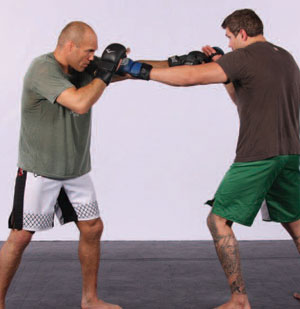
Six-time former UFC heavyweight and 3-time light heavyweight champion Randy “The Natural” Couture is widely credited for bringing MMA into the mainstream. World-renowned for his intense fight pace, stellar conditioning and amazing work ethic, Couture didn’t get his start in mixed martial arts until he was 34 years old.
A four-time Olympic wrestling alternate, Couture’s base for his fighting style is—as expected--his Greco Roman wrestling background. He wrestled in junior high school, high school, in the army for six years and in college at Oklahoma State.
Couture burst into a fledgling MMA scene while working as an assistant wrestling coach at Oregon State. “At the time I was still competing on the national team in wrestling, trying to make the Olympic team,” he recalls. “As much as I loved coaching at Oregon State, the pay wasn’t fantastic. I made $25,000 a year as a wrestling coach and so I took the opportunity almost on a whim to try mixed martial arts, and they gave me almost that much for one fight. It was not only a better financial cushion, but it allowed me to train fulltime without all the other coaching duties and all the other stuff that came with being a college coach. The huge plus of being a college coach was being on the mat but there were a lot of other duties and a whole lot of other things involved in the job as well.”
The UFC has changed quite a bit since Couture started fighting for them in 1997 at UFC 13. “It’s night and day from then to now, obviously,” he recalls. “There was still the tournament format back then. There were still very few rules, there were headbutts and you were allowed to kick a downed opponent. People could wear shoes or not wear shoes, wear gloves or not wear gloves. The first UFC I was in, we had weigh-ins in the lobby of the Holiday Inn in Augusta and we fought in the Civic Center there, which holds about 1500 people. It was much different back then. It’s still continuing to explode and gain traction everywhere,” he said.
.jpg)
Although Couture says every single guy he’s fought has been tough, one fight in particular stands out for him—the first time he fought Pedro Rizzo at UFC 31 on May 4, 2001. “That was a war,” he remembers. “It was a five-round title fight, with a lot of back and forth. I ended up winning, but it was a very tough fight.”
Couture announced his retirement from the sport in 2007. “At the time I felt like I just needed to step away. I wasn’t getting the job done and I had a lot of other things on my plate that were weighing me down,” he explained. “ About a year later the dust settled and the opportunity to come back and fight Tim Sylvia arose so I felt good about it and I jumped on it.”
In fact, the fight with Tim Sylvia is the one he’s most proud of. “Of all my fights, that is the fight that I like the most. It was the most fun. It was an amazing crowd and everything surrounding that fight was remarkable.” Couture said.
Rumors of Couture planning to retire again have been floating around, but he said he hadn’t made up his mind. “I don’t know I don’t have any plans; probably just fade away at this point I don’t think anybody’s going to buy any public statements of retirement at this point,” he explained.
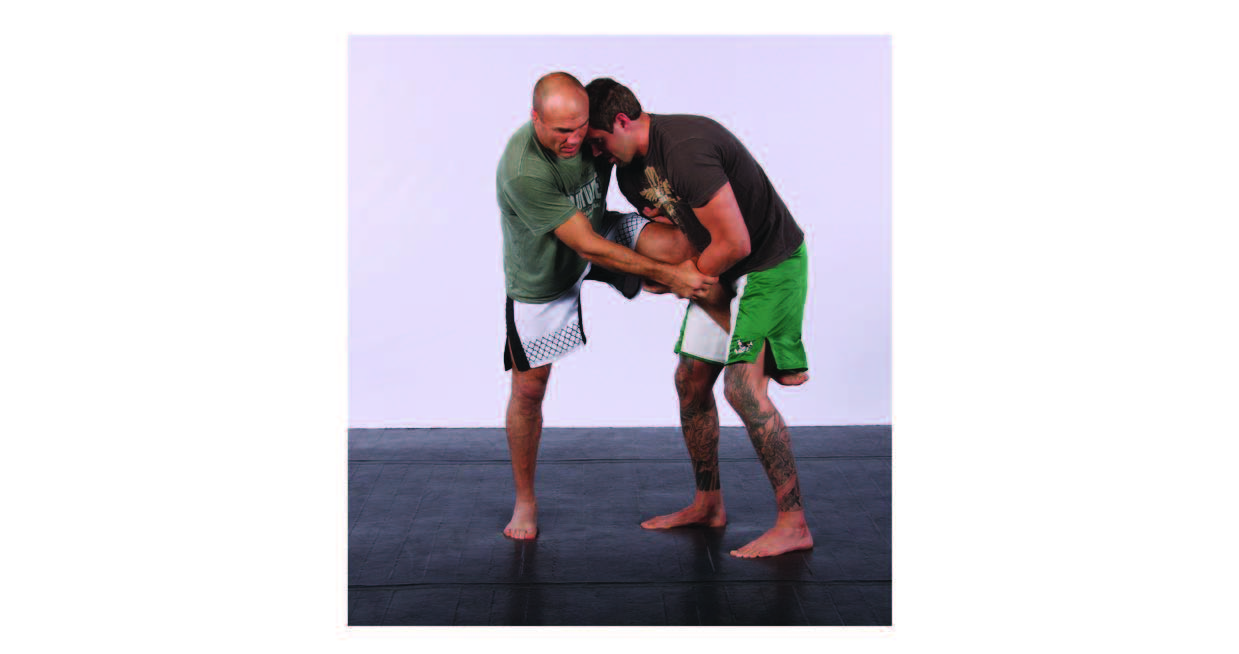
Couture’s son, Ryan, who’s begun fighting for Strikeforce, will be carrying the torch. Ryan began training jiu jitsu in college, and later picked up some kickboxing and Muay Thai. When Couture moved his son to Las Vegas to help him run the gym, Xtreme Couture, Ryan really got immersed in training. “He developed a strong passion for it, so I’ve just kind of tried to stay out of his way.” Couture said, explaining that his son got into the sport on his own. “It’s a tough sport, it’s something you definitely have to do because you want to do it not because somebody else is trying to push you into it.”
By now you’re probably asking yourself the million-dollar question… How can you train like Randy Couture? Here are seven specific areas to look at in your own training, followed by some sample workouts from Xtreme Training: The Fighter’s Ultimate Fitness Manual, written by Randy Couture (along with grappling coach Lance Freimuth and Muay Thai kickboxer Erich Krauss.)
Sport-specific
When Couture transitioned from Olympic level wrestling to MMA, it required a lot of changes. “Olympic matches last about six minutes, if you happen to go overtime it could last 9 minutes total. It’s a much different pace for a fight. Fights are anywhere from 15-25 minutes depending on if they’re championship or not, so it’s much more endurance oriented, not that you don’t need endurance for wrestling but it’s a different kind of intensity, it’s much more explosive.” Couture said.
Although Couture made modifications to his training, he noted that the difference is primarily in the mentality. “In wrestling, you’re constantly going, constantly attacking; you’re going to be cautioned or warned for any kind of stalling. Fight pace is more about biding your time, looking for the right opportunity, knowing when to turn it on and when you can kind of hold position and wait for the right opportunity.”
Knowing how to conserve your energy for your sport is crucial.
Modify your training for maximum effectiveness (and age, if necessary)
As a 47-year old phenom, Couture seems to have completely shattered the age barrier, stating that modifications in training that he’s made over the years haven’t been specific to his age. “I haven’t really had to adjust too much to my age as I’ve gotten older. It’s been more specific to working on things that would make me a more efficient and better fighter,” he says. “I’ve gotten smarter and refined the tactics and refined the techniques and the training regimens.”
For Couture, these refinements include less strength and conditioning training, not more. “I used to do a plyometrics day, a strength day and a circuit weight training day and training every morning, twice a week each. So that was six days a week, every week, in the morning I was doing strength and conditioning. Now I’ve kind of amalgamated all those days into a 3-day/week program, which gives me three other days in the morning so that I can work on technique and tactics. I’d say I became smarter and more efficient. I’ve been doing it for a long time so you just kind of figure out what works for you and what doesn’t.”
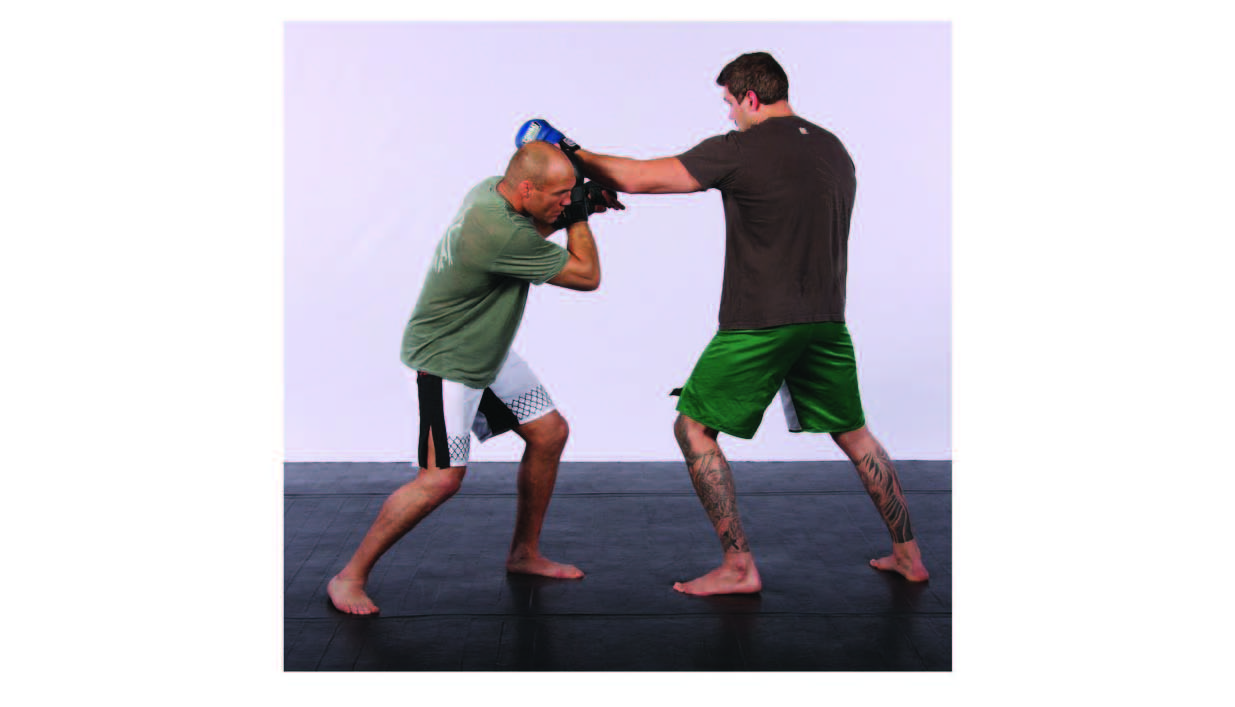
Xtreme Training co-author Lance Freimuth said that most normal people do need to make modifications based on age, primarily reducing volume and intensity. However, he points out that there’s no real cutoff point at which a fighter goes from being ‘young’ to ‘old.’ “Many fighters are reaching the peak of their athletic career in their early-mid thirties. Then there's other fighters who are completely burnt out by their early thirties. Then there are fighters like Randy Couture who didn't even start fighting until their early thirties. Fighters tend to slow down gradually and predictably, mostly due to their personality and fighting style,” he said
Minimize wear and tear
Minimizing wear and tear is a big piece of the puzzle, said Freimuth. “Wear and tear is a big piece of the puzzle, since fighters are often riddled with minor injuries (and the residual scar tissue) which can result in decreased performance.”
“Aches and pains alone are relatively minor, but when stacked with years and years of new injuries that are never allowed heal, they can eventually cut your competitive career short. Taking the necessary time off to recover, and properly healing injuries is necessary to longevity,” Freimuth explains, adding that it’s important to take time off to recover from minor injuries whenever possible.
As for Randy, his fighting style is a big element in his ability to avoid taking damage. “He's never been the type to engage in slugfests with his opponents,” Freimuth pointed out. “He's always working to gain the upper hand, and he very rarely finds himself going tit for tat. Avoiding those wars of attrition, both in the cage and in the gym, helps with longevity as well.”
Randy’s mental toughness helps him be self-aware enough to know when he needs to take time off in the gym—and when he needs to push himself.
“Without the mental toughness, a fighter will try to find the easy way out of every training session,” Freimuth explained. “Because Randy knows that he will rarely break mentally, he's able to listen to his body and realize that the aches and pains are genuine injuries, rather than his ego trying to protect itself. For most athletes who lack that mental toughness, they simply need to rely on their coaches to tell them when they're working too hard and when they're not working hard enough.”
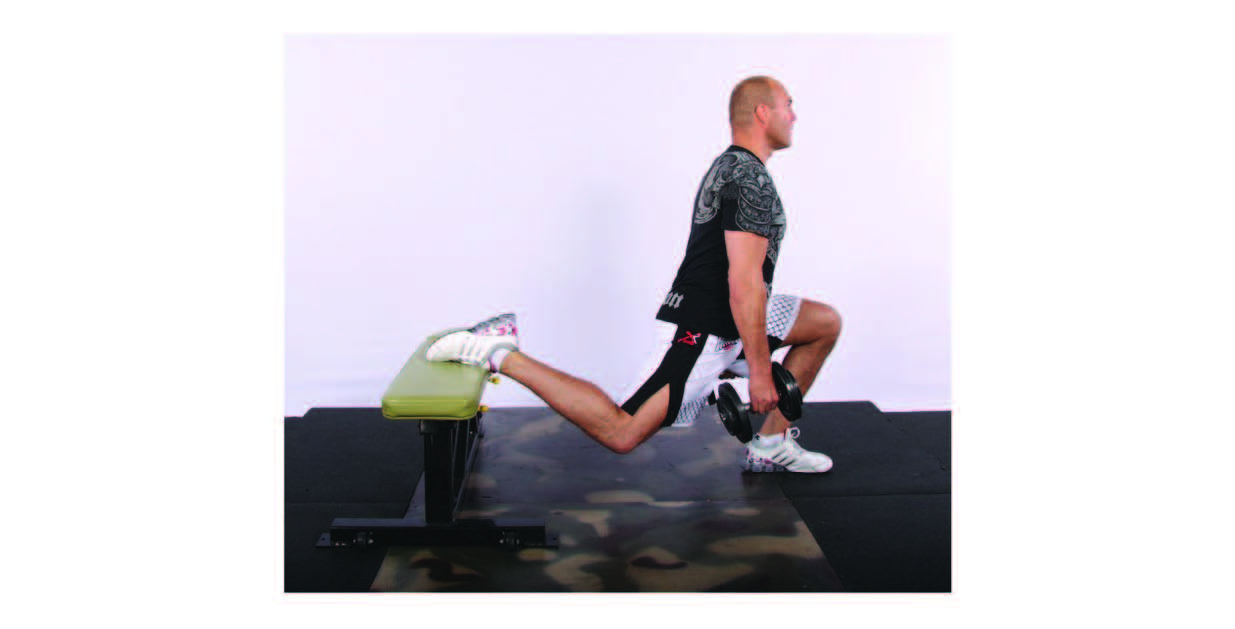
Mental training
Couture believes that mental skills training is the most underrated and overlooked part of the MMA game. “Everyone trains on the physical stuff but very few guys working on the mental skills of dealing with the adversity of competing and competition and doing well with the stresses and the pressure and all those things in our lives, how they compete, train to compete,” he said. How do you train mentally? Couture says finding a sports psychologist is key for helping athletes figure out how they’re thinking and why they’re doing what they’re doing, which will help put things in perspective and introduce some tools to work with.
What’s Couture’s secret for being able to unleash in the cage? “I think the biggest thing for me is just to stay calm and relaxed and focused,” he shared. “I’m usually smiling, I enjoy what I do, I like having guys around and joking and carrying on in the locker room, not all hard and intense its lighthearted and I have a great job so I try to enjoy the moment kind of take it all in and relax, and go out and do what I trained to do and as long as I keep that mentality whatever happens I can live with.”
Check your ego
The training philosophy at Xtreme Couture summed up pretty well by the motto “Leave your ego at the door.”
“There’s nobody here walking around all puffed up and thinking they’re the baddest on the planet, and we do have some guys that probably are the baddest on the planet, but they don’t act that way. That just seems to get in the way when they get down to training and pushing each other and trying to make each other better.” Couture said.
Working as a team extends into every training session. “You’ll often find pros and amateurs working together. Everyone knows their place, and everyone's role is important. The newer fighters are there to feed the pros fresh bodies, while at the same time they're trying to push themselves to greater heights. The pros are always available to help the amateurs and to prep the other pros for their upcoming fights,” Freimuth explained.
This isn’t to imply that there's no order. “There is definitive hierarchy at the gym,” Freimuth said. “Randy is obviously the top of the heap. If he's training for a fight, he gets first priority on training equipment and sparring partners. Then follow the rest of the high level pros, like Tyson Griffin, Martin Kampmann, Gray Maynard, etc.” If there’s two or three high level guys in training camp at the same time, priority shifts to whoever has the closest upcoming fight. “The lower level pros and amateurs kind of fill in the gaps, training with whomever has the greatest need and in whatever positions they need.” Freimuth said.
Eat smart
Randy keeps his diet pretty simple. “I’m not one of those guys that can do all the measuring and calorie counting and all that craziness,” he said. “I try to eat good whole foods. I try to incorporate a lot of greens in my diet and stay away from the processed and sugary foods especially. It’s remarkably simple.”
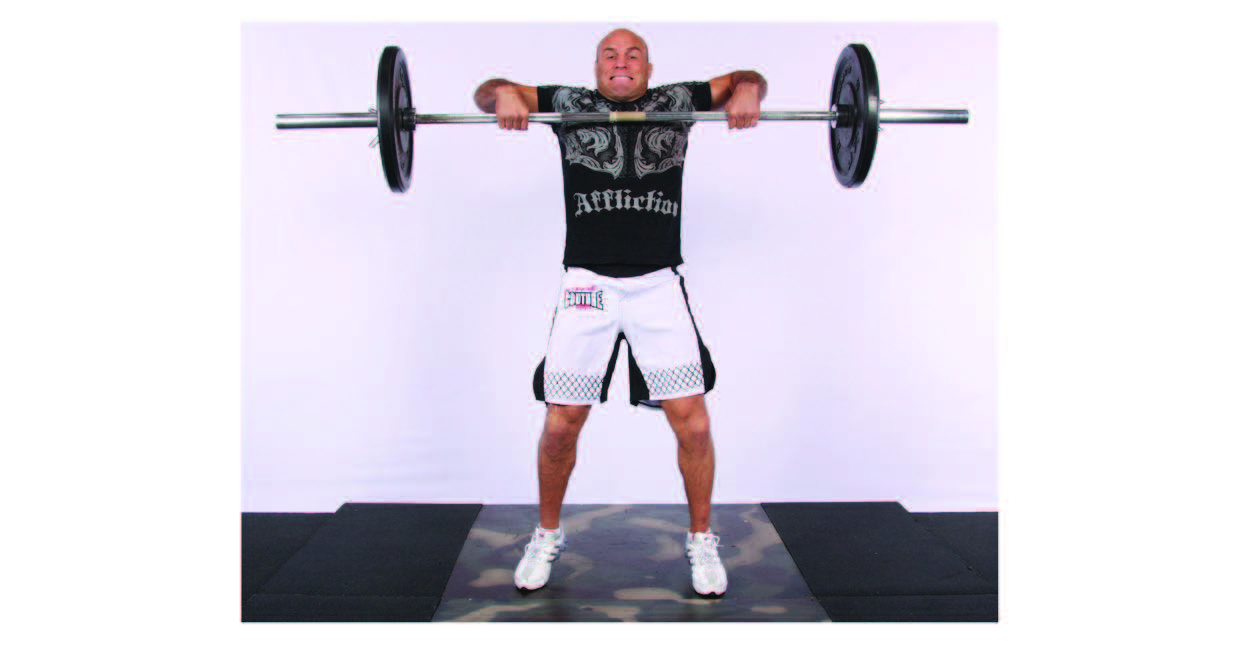
Couture limits red meat to twice a month, preferring fish and chicken. He eats a lot of pasta and oatmeal, but he tries to keep his carbs to the first half of the day and proteins to the second half. He eats greens and whole foods throughout the day.
Couture gets a blood test done and has a doctor evaluate it to determine which supplements he needs to be taking.
And finally…
“All of the programs we use, conditioning and otherwise, are outlined in my new book, Xtreme Training: The Fighter’s Ultimate Fitness Manual,” Couture said. “There’s certainly a cardio piece to that, there’s a plyometrics piece to that puzzle and then working on core strength for fighting, all those pieces are kind of combined into a conditioning workout. It varies from day to day, but usually we work out 3 days a week in the morning.”
When in training camp, Couture follows a pretty general strength-building formula, which includes two full-body strength training days, split up by one day of conditioning training.
The strength training workouts are full-body routines, with a warm-up consisting of dynamic footwork drills, agility latter and core work. “His strength sessions are primarily aimed towards increasing power through dynamic effort Olympic lifting. The Olympic lifts are a great tool to increase explosion, which is likely the single most important athletic trait for a fighter,” Freimuth explained. After partial or full Olympic lifts, Couture moves onto assistance lifts organized by movement pattern: upper body push, upper body pull and posterior chain. “Then he moves onto assistance lifts, which range from everything from Front Squats to bicep curls. The goal of the assistance lifts is to develop weak spots in the body and support the Olympic lifts, but the core of the workout comes from the powerful Oly lifts.”
What does a complete strength training workout look like? It starts with a dynamic warmup, core exercises (such as situps, crunches and leg raises) Olympic lift variations (hang clean, dead clean, snatch, split jerk), posterior chain assistance (squat, deadlift, front squat, etc.), upper body assistance (bench or push-up for pushing, row or pull-up for pulling) followed by minor assistance work for weak spots as needed.
During the first five weeks of his training camp, Couture does two strength workouts a week with a conditioning workout in between. The conditioning workout includes circuit training, which is focused on total reps.
In the last five weeks of his camp, Couture cuts out all strength sessions and works his conditioning sessions three days a week. Conditioning is no longer focused on reps but instead are workouts timed to mimic the work/rest ratios of a UFC fight: 5 minute working rounds with 1-minute rest.
If he’s preparing for a three round fight (3 5-minute rounds with a minute rest), he may start with only 3 3-minute rounds with a minute rest and then work his way up to 3 5-minute rounds with 50 seconds of rest to improve his recovery time and increase his work capacity.
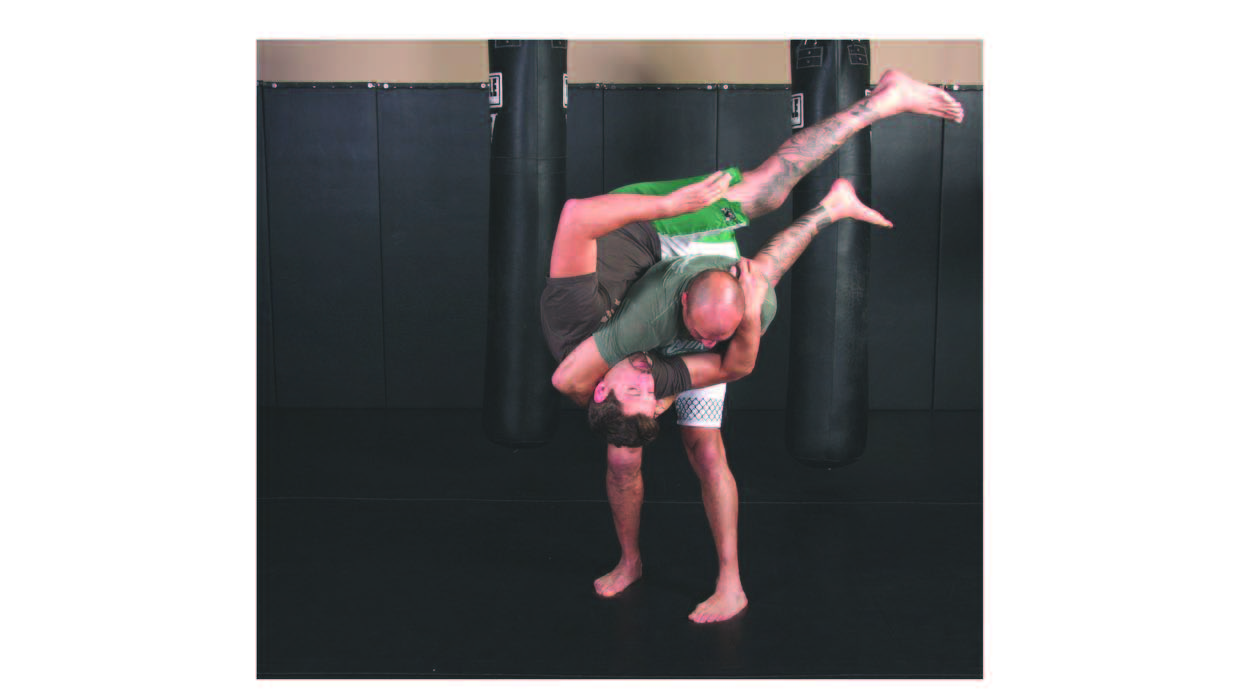
The rounds include a variety of exercises. “He might rotate between 4-8 different exercises every 10-20 seconds, each exercise stimulating a different muscle group,” Freimuth said. “One exercise might be battling ropes, which taxes the shoulders and back heavily. Then he might move onto jump squats, which primarily challenges the legs.” The idea is to work individual body parts, moving on before exhaustion, in order to accumulate as much volume as possible in just 5 minutes.
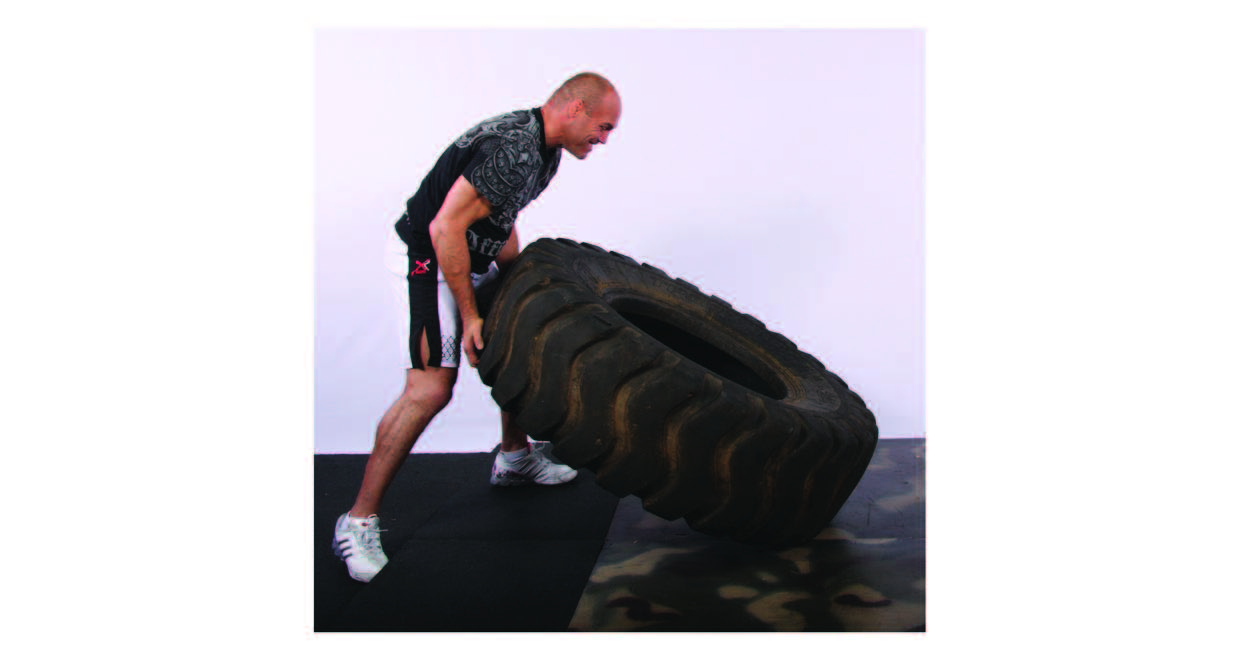
Every workout starts with a dynamic warm-up utilizing footwork pattern drills,agility training, and core work to get blood flowing to every area of the body. Then Randy moves onto to that day’s individual focus, whether it be power or cardio.
Obviously Randy tends to focus on power earlier in his training camps, and phase it out as the fight approaches, while the opposite is true of his conditioning sessions. Within a few weeks of his fight, Randy completely eliminates his strength training sessions and will do 3 circuit based conditioning sessions per week. “
“If I’m in a peaking phase and getting ready for a certain opponent then the morning workout’s usually an hour to an hour and a half and they’re either strength and conditioning oriented or technique oriented working on striking, or sometimes grappling. And then the afternoon workouts usually occur from 4 to 6 and they’ll last 2, 2.5 hours and they’re sparring oriented for situations that are specific to that opponent so live sparring and general, trying to get that mat time in to be in top shape for the fight” Couture said.
Randy’s MMA training is a totally different session from his GPP sessions. He normally completes his strength and conditioning or technique work in the morning and trains MMA at night. “99.9% of elite fighters separate their training this way. Don't be fooled by strength coaches who tell you they have their guys doing Thai kicks while standing on a bosu ball while simultaneously executing overhead pressing with a stretch band. It's a gimmick. When the cameras leave, everyone is doing deadlifts, power cleans, and simple circuits.” Freimuth explained.
“Randy's training is very fundamental. But fundamental=effective. His strength sessions are just geared towards increasing strength. Simple exercises, nothing sports specific. His conditioning sessions are just about increasing stamina. But when he gets on the mat, it's all about increasing technique and timing. It's all about getting sharper at fighting, not about exhausting himself or trying to increase conditioning,” Freimuth said
Xtreme Training: The Fighter’s Ultimate Fitness Manual isn’t just Men’s Health Power Training or Starting Strength with Randy Couture’s face on the cover. It not only has a complete GPP section, but also a substantial sports specific drills/exercise section for both ground and stand-up fighting. The GPP and SPP sections, both extensive, are separated. “It's not as sexy, but in real life that's what works.” Freimuth said.
Here’s a small taste of the workouts in the book.
The dead clean workout is a sample strength-training workout for Randy.
The first circuit is a circuit workout Randy might use for conditioning in the first half of his training camp. It is organized by reps, with the goal to reduce the amount of time of the rounds. The second circuit is one Couture might use in the second half of his camp. It is focused on total time, with the goal of accomplishing more work in the set amount of time. The final workout is a sample MMA practice that Randy might use late in a training camp.
(See PDF for sample training circuit)
A four-time Olympic wrestling alternate, Couture’s base for his fighting style is—as expected--his Greco Roman wrestling background. He wrestled in junior high school, high school, in the army for six years and in college at Oklahoma State.
Couture burst into a fledgling MMA scene while working as an assistant wrestling coach at Oregon State. “At the time I was still competing on the national team in wrestling, trying to make the Olympic team,” he recalls. “As much as I loved coaching at Oregon State, the pay wasn’t fantastic. I made $25,000 a year as a wrestling coach and so I took the opportunity almost on a whim to try mixed martial arts, and they gave me almost that much for one fight. It was not only a better financial cushion, but it allowed me to train fulltime without all the other coaching duties and all the other stuff that came with being a college coach. The huge plus of being a college coach was being on the mat but there were a lot of other duties and a whole lot of other things involved in the job as well.”
The UFC has changed quite a bit since Couture started fighting for them in 1997 at UFC 13. “It’s night and day from then to now, obviously,” he recalls. “There was still the tournament format back then. There were still very few rules, there were headbutts and you were allowed to kick a downed opponent. People could wear shoes or not wear shoes, wear gloves or not wear gloves. The first UFC I was in, we had weigh-ins in the lobby of the Holiday Inn in Augusta and we fought in the Civic Center there, which holds about 1500 people. It was much different back then. It’s still continuing to explode and gain traction everywhere,” he said.
.jpg)
Although Couture says every single guy he’s fought has been tough, one fight in particular stands out for him—the first time he fought Pedro Rizzo at UFC 31 on May 4, 2001. “That was a war,” he remembers. “It was a five-round title fight, with a lot of back and forth. I ended up winning, but it was a very tough fight.”
Couture announced his retirement from the sport in 2007. “At the time I felt like I just needed to step away. I wasn’t getting the job done and I had a lot of other things on my plate that were weighing me down,” he explained. “ About a year later the dust settled and the opportunity to come back and fight Tim Sylvia arose so I felt good about it and I jumped on it.”
In fact, the fight with Tim Sylvia is the one he’s most proud of. “Of all my fights, that is the fight that I like the most. It was the most fun. It was an amazing crowd and everything surrounding that fight was remarkable.” Couture said.
Rumors of Couture planning to retire again have been floating around, but he said he hadn’t made up his mind. “I don’t know I don’t have any plans; probably just fade away at this point I don’t think anybody’s going to buy any public statements of retirement at this point,” he explained.

Couture’s son, Ryan, who’s begun fighting for Strikeforce, will be carrying the torch. Ryan began training jiu jitsu in college, and later picked up some kickboxing and Muay Thai. When Couture moved his son to Las Vegas to help him run the gym, Xtreme Couture, Ryan really got immersed in training. “He developed a strong passion for it, so I’ve just kind of tried to stay out of his way.” Couture said, explaining that his son got into the sport on his own. “It’s a tough sport, it’s something you definitely have to do because you want to do it not because somebody else is trying to push you into it.”
By now you’re probably asking yourself the million-dollar question… How can you train like Randy Couture? Here are seven specific areas to look at in your own training, followed by some sample workouts from Xtreme Training: The Fighter’s Ultimate Fitness Manual, written by Randy Couture (along with grappling coach Lance Freimuth and Muay Thai kickboxer Erich Krauss.)
Sport-specific
When Couture transitioned from Olympic level wrestling to MMA, it required a lot of changes. “Olympic matches last about six minutes, if you happen to go overtime it could last 9 minutes total. It’s a much different pace for a fight. Fights are anywhere from 15-25 minutes depending on if they’re championship or not, so it’s much more endurance oriented, not that you don’t need endurance for wrestling but it’s a different kind of intensity, it’s much more explosive.” Couture said.
Although Couture made modifications to his training, he noted that the difference is primarily in the mentality. “In wrestling, you’re constantly going, constantly attacking; you’re going to be cautioned or warned for any kind of stalling. Fight pace is more about biding your time, looking for the right opportunity, knowing when to turn it on and when you can kind of hold position and wait for the right opportunity.”
Knowing how to conserve your energy for your sport is crucial.
Modify your training for maximum effectiveness (and age, if necessary)
As a 47-year old phenom, Couture seems to have completely shattered the age barrier, stating that modifications in training that he’s made over the years haven’t been specific to his age. “I haven’t really had to adjust too much to my age as I’ve gotten older. It’s been more specific to working on things that would make me a more efficient and better fighter,” he says. “I’ve gotten smarter and refined the tactics and refined the techniques and the training regimens.”
For Couture, these refinements include less strength and conditioning training, not more. “I used to do a plyometrics day, a strength day and a circuit weight training day and training every morning, twice a week each. So that was six days a week, every week, in the morning I was doing strength and conditioning. Now I’ve kind of amalgamated all those days into a 3-day/week program, which gives me three other days in the morning so that I can work on technique and tactics. I’d say I became smarter and more efficient. I’ve been doing it for a long time so you just kind of figure out what works for you and what doesn’t.”

Xtreme Training co-author Lance Freimuth said that most normal people do need to make modifications based on age, primarily reducing volume and intensity. However, he points out that there’s no real cutoff point at which a fighter goes from being ‘young’ to ‘old.’ “Many fighters are reaching the peak of their athletic career in their early-mid thirties. Then there's other fighters who are completely burnt out by their early thirties. Then there are fighters like Randy Couture who didn't even start fighting until their early thirties. Fighters tend to slow down gradually and predictably, mostly due to their personality and fighting style,” he said
Minimize wear and tear
Minimizing wear and tear is a big piece of the puzzle, said Freimuth. “Wear and tear is a big piece of the puzzle, since fighters are often riddled with minor injuries (and the residual scar tissue) which can result in decreased performance.”
“Aches and pains alone are relatively minor, but when stacked with years and years of new injuries that are never allowed heal, they can eventually cut your competitive career short. Taking the necessary time off to recover, and properly healing injuries is necessary to longevity,” Freimuth explains, adding that it’s important to take time off to recover from minor injuries whenever possible.
As for Randy, his fighting style is a big element in his ability to avoid taking damage. “He's never been the type to engage in slugfests with his opponents,” Freimuth pointed out. “He's always working to gain the upper hand, and he very rarely finds himself going tit for tat. Avoiding those wars of attrition, both in the cage and in the gym, helps with longevity as well.”
Randy’s mental toughness helps him be self-aware enough to know when he needs to take time off in the gym—and when he needs to push himself.
“Without the mental toughness, a fighter will try to find the easy way out of every training session,” Freimuth explained. “Because Randy knows that he will rarely break mentally, he's able to listen to his body and realize that the aches and pains are genuine injuries, rather than his ego trying to protect itself. For most athletes who lack that mental toughness, they simply need to rely on their coaches to tell them when they're working too hard and when they're not working hard enough.”

Mental training
Couture believes that mental skills training is the most underrated and overlooked part of the MMA game. “Everyone trains on the physical stuff but very few guys working on the mental skills of dealing with the adversity of competing and competition and doing well with the stresses and the pressure and all those things in our lives, how they compete, train to compete,” he said. How do you train mentally? Couture says finding a sports psychologist is key for helping athletes figure out how they’re thinking and why they’re doing what they’re doing, which will help put things in perspective and introduce some tools to work with.
What’s Couture’s secret for being able to unleash in the cage? “I think the biggest thing for me is just to stay calm and relaxed and focused,” he shared. “I’m usually smiling, I enjoy what I do, I like having guys around and joking and carrying on in the locker room, not all hard and intense its lighthearted and I have a great job so I try to enjoy the moment kind of take it all in and relax, and go out and do what I trained to do and as long as I keep that mentality whatever happens I can live with.”
Check your ego
The training philosophy at Xtreme Couture summed up pretty well by the motto “Leave your ego at the door.”
“There’s nobody here walking around all puffed up and thinking they’re the baddest on the planet, and we do have some guys that probably are the baddest on the planet, but they don’t act that way. That just seems to get in the way when they get down to training and pushing each other and trying to make each other better.” Couture said.
Working as a team extends into every training session. “You’ll often find pros and amateurs working together. Everyone knows their place, and everyone's role is important. The newer fighters are there to feed the pros fresh bodies, while at the same time they're trying to push themselves to greater heights. The pros are always available to help the amateurs and to prep the other pros for their upcoming fights,” Freimuth explained.
This isn’t to imply that there's no order. “There is definitive hierarchy at the gym,” Freimuth said. “Randy is obviously the top of the heap. If he's training for a fight, he gets first priority on training equipment and sparring partners. Then follow the rest of the high level pros, like Tyson Griffin, Martin Kampmann, Gray Maynard, etc.” If there’s two or three high level guys in training camp at the same time, priority shifts to whoever has the closest upcoming fight. “The lower level pros and amateurs kind of fill in the gaps, training with whomever has the greatest need and in whatever positions they need.” Freimuth said.
Eat smart
Randy keeps his diet pretty simple. “I’m not one of those guys that can do all the measuring and calorie counting and all that craziness,” he said. “I try to eat good whole foods. I try to incorporate a lot of greens in my diet and stay away from the processed and sugary foods especially. It’s remarkably simple.”

Couture limits red meat to twice a month, preferring fish and chicken. He eats a lot of pasta and oatmeal, but he tries to keep his carbs to the first half of the day and proteins to the second half. He eats greens and whole foods throughout the day.
Couture gets a blood test done and has a doctor evaluate it to determine which supplements he needs to be taking.
And finally…
“All of the programs we use, conditioning and otherwise, are outlined in my new book, Xtreme Training: The Fighter’s Ultimate Fitness Manual,” Couture said. “There’s certainly a cardio piece to that, there’s a plyometrics piece to that puzzle and then working on core strength for fighting, all those pieces are kind of combined into a conditioning workout. It varies from day to day, but usually we work out 3 days a week in the morning.”
When in training camp, Couture follows a pretty general strength-building formula, which includes two full-body strength training days, split up by one day of conditioning training.
The strength training workouts are full-body routines, with a warm-up consisting of dynamic footwork drills, agility latter and core work. “His strength sessions are primarily aimed towards increasing power through dynamic effort Olympic lifting. The Olympic lifts are a great tool to increase explosion, which is likely the single most important athletic trait for a fighter,” Freimuth explained. After partial or full Olympic lifts, Couture moves onto assistance lifts organized by movement pattern: upper body push, upper body pull and posterior chain. “Then he moves onto assistance lifts, which range from everything from Front Squats to bicep curls. The goal of the assistance lifts is to develop weak spots in the body and support the Olympic lifts, but the core of the workout comes from the powerful Oly lifts.”
What does a complete strength training workout look like? It starts with a dynamic warmup, core exercises (such as situps, crunches and leg raises) Olympic lift variations (hang clean, dead clean, snatch, split jerk), posterior chain assistance (squat, deadlift, front squat, etc.), upper body assistance (bench or push-up for pushing, row or pull-up for pulling) followed by minor assistance work for weak spots as needed.
During the first five weeks of his training camp, Couture does two strength workouts a week with a conditioning workout in between. The conditioning workout includes circuit training, which is focused on total reps.
In the last five weeks of his camp, Couture cuts out all strength sessions and works his conditioning sessions three days a week. Conditioning is no longer focused on reps but instead are workouts timed to mimic the work/rest ratios of a UFC fight: 5 minute working rounds with 1-minute rest.
If he’s preparing for a three round fight (3 5-minute rounds with a minute rest), he may start with only 3 3-minute rounds with a minute rest and then work his way up to 3 5-minute rounds with 50 seconds of rest to improve his recovery time and increase his work capacity.

The rounds include a variety of exercises. “He might rotate between 4-8 different exercises every 10-20 seconds, each exercise stimulating a different muscle group,” Freimuth said. “One exercise might be battling ropes, which taxes the shoulders and back heavily. Then he might move onto jump squats, which primarily challenges the legs.” The idea is to work individual body parts, moving on before exhaustion, in order to accumulate as much volume as possible in just 5 minutes.

Every workout starts with a dynamic warm-up utilizing footwork pattern drills,agility training, and core work to get blood flowing to every area of the body. Then Randy moves onto to that day’s individual focus, whether it be power or cardio.
Obviously Randy tends to focus on power earlier in his training camps, and phase it out as the fight approaches, while the opposite is true of his conditioning sessions. Within a few weeks of his fight, Randy completely eliminates his strength training sessions and will do 3 circuit based conditioning sessions per week. “
“If I’m in a peaking phase and getting ready for a certain opponent then the morning workout’s usually an hour to an hour and a half and they’re either strength and conditioning oriented or technique oriented working on striking, or sometimes grappling. And then the afternoon workouts usually occur from 4 to 6 and they’ll last 2, 2.5 hours and they’re sparring oriented for situations that are specific to that opponent so live sparring and general, trying to get that mat time in to be in top shape for the fight” Couture said.
Randy’s MMA training is a totally different session from his GPP sessions. He normally completes his strength and conditioning or technique work in the morning and trains MMA at night. “99.9% of elite fighters separate their training this way. Don't be fooled by strength coaches who tell you they have their guys doing Thai kicks while standing on a bosu ball while simultaneously executing overhead pressing with a stretch band. It's a gimmick. When the cameras leave, everyone is doing deadlifts, power cleans, and simple circuits.” Freimuth explained.
“Randy's training is very fundamental. But fundamental=effective. His strength sessions are just geared towards increasing strength. Simple exercises, nothing sports specific. His conditioning sessions are just about increasing stamina. But when he gets on the mat, it's all about increasing technique and timing. It's all about getting sharper at fighting, not about exhausting himself or trying to increase conditioning,” Freimuth said
Xtreme Training: The Fighter’s Ultimate Fitness Manual isn’t just Men’s Health Power Training or Starting Strength with Randy Couture’s face on the cover. It not only has a complete GPP section, but also a substantial sports specific drills/exercise section for both ground and stand-up fighting. The GPP and SPP sections, both extensive, are separated. “It's not as sexy, but in real life that's what works.” Freimuth said.
Here’s a small taste of the workouts in the book.
The dead clean workout is a sample strength-training workout for Randy.
The first circuit is a circuit workout Randy might use for conditioning in the first half of his training camp. It is organized by reps, with the goal to reduce the amount of time of the rounds. The second circuit is one Couture might use in the second half of his camp. It is focused on total time, with the goal of accomplishing more work in the set amount of time. The final workout is a sample MMA practice that Randy might use late in a training camp.
(See PDF for sample training circuit)
|
Yael Grauer is an independent journalist, a Brazilian Jiu-Jitsu blue belt, and managing editor of Performance Menu. Find her at https://www.yaelwrites.com or on Twitter.
|
Search Articles
Article Categories
Sort by Author
Sort by Issue & Date
Article Categories
Sort by Author
Sort by Issue & Date

